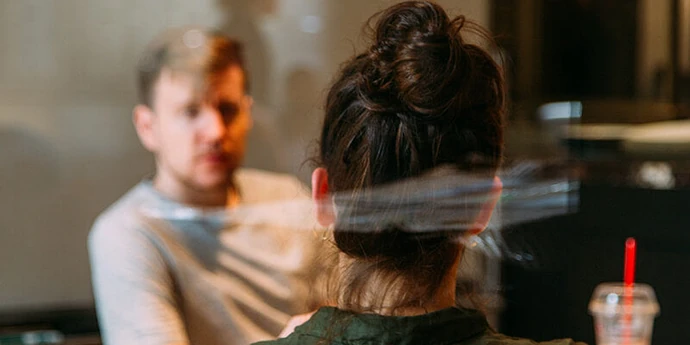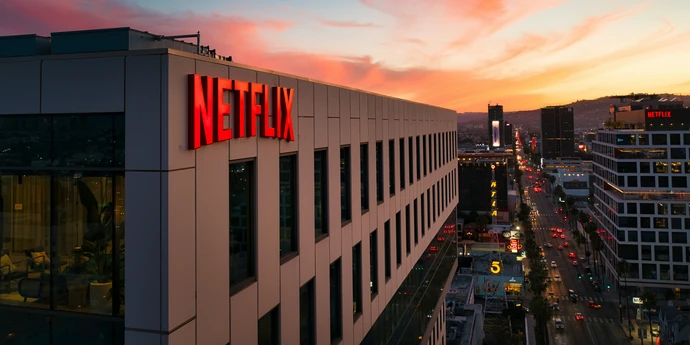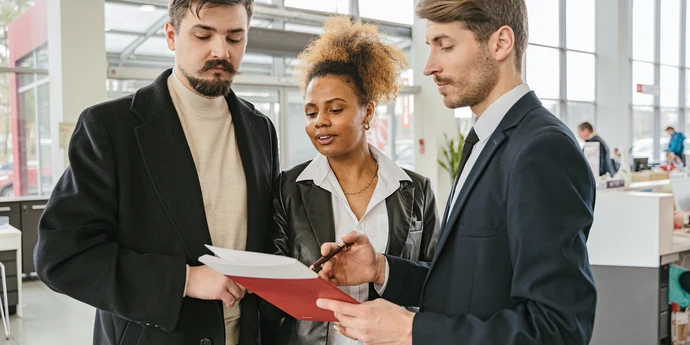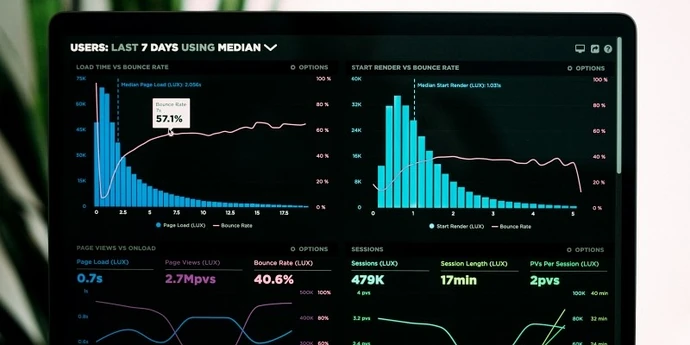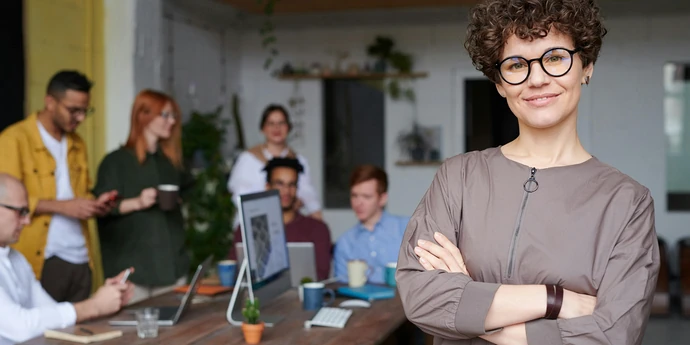The question “what is your favorite product and why?” is key in product manager interviews. Out of the hundreds of PM interview questions that we studied, this question alone made up 11% of the product design category.
So it’s very likely that you’ll have to answer this question. Though it may appear simple, interviewers will expect thoughtful, structured answers that demonstrate your critical thinking and product sense.
You’ll need to answer using a clear framework. The good news is that we’ve found one for you, and we've written a full sample answer that shows you how to put it into practice.
Here's an overview of what we'll cover:
- Why interviewers ask "what is your favorite product and why?"
- What type of product should I pick?
- How to answer "what is your favorite product and why?"
- Example answers for "what is your favorite product and why?"
- How to practice the favorite product question
Click here to practice with ex-FAANG interviewers
Let's get started!
1. Why interviewers ask "what is your favorite product and why?" ↑
“What’s your favorite product and why?” is a common question asked during PM interviews at top tech companies. Interviewers ask this question to assess:
- Your understanding of product design
- Your ability to deliver constructive criticism
- Your knowledge of a specific product
First, one of your tasks as a PM is to help design new product features and improve existing ones. So you’ll need to be able to explain what differentiates an excellent product from its competitors.
Second, PMs work closely with designers, so you’ll be expected to deliver criticism on designs with a high degree of emotional intelligence. Interviewers will therefore want to see that you can provide clear and constructive feedback when answering the question.
Third, PMs often have to make important design decisions with little time and lacking data. So a good PM knows the product they own inside and out, which helps them make better choices in these difficult scenarios. This is why certain companies will expect you to have a solid understanding of their products from your first day as an employee.
“(The favorite product question is) a good question to highlight industry expertise. The interviewer is testing if you can identify and articulate the unique value propositions of the product." - Jessica Z., Amazon Product Marketing Manager
2. What type of product should I pick? ↑
Pick a product you genuinely like and are very familiar with. Your enthusiasm for the product will come through, which is always a plus, aside from your in-depth knowledge of it.
We recommend that you prepare beforehand for two favorite products– the company’s and another company’s product but not that of the company’s direct rival.
Human nature being what it is, people generally like to talk about their own. So, choose a product from the company you’re interviewing for. Select one of their popular or successful products.
This gives you the opportunity to:
- Show them that you’ve done your research on their company and are genuinely interested in their products.
- Discuss their product in-depth and showcase more of your product knowledge.
- Demonstrate to them your understanding of what makes a good product. This is what people call “product sense”.
- Highlight your personal connection to their product by explaining why you personally find the product interesting, useful, and/or innovative as a user.
The other favorite product doesn’t have to be the company’s product, as long as it’s not that of the company’s direct competitor. For example, if you’re interviewing at Meta for an Instagram product manager role, it wouldn’t make sense for you to say your favorite product is TikTok.
It also doesn’t have to be something the interviewers would be familiar with. As long as you can clearly explain what it does, who its users are, how it works, and how it meets users’ needs, it’s fine.
Being prepared with two products will help you give your interviewers what they’re looking for—whether they ask for their company's product or any product.
3. How to answer "What is your favorite product and why?" ↑
We recommend using a three-step approach to answer the favorite product question in product manager interviews.
This approach is also known as the BUS framework:
- Business objective
- User problems
- Solutions
If you're preparing for a product manager interview, we strongly encourage you to learn that framework, as it can also be used for product design questions (e.g. “How would you design a phone for a blind person?”) as well as product improvement questions (e.g. "How would you improve YouTube?").
Let's go through each of the three steps one at a time.
Step one: Business objective
Here are the things you need to do at the beginning of your answer:
- Outline your answer.
- Explain the product.
- Define the business objective.
Many candidates skip this step, listing aspects of their favorite product in an unstructured way. This is a big missed opportunity to help your interviewer understand your thinking more clearly and to show that you’ve got great communication skills.
First, tell your interviewer upfront how you will answer their question. Imagine it like the table of contents at the beginning of a book—it's helpful for the interviewer to have an overview before diving into details.
Next, take a minute or two to explain the product. Your interviewer will only be able to easily follow your answer if they understand what the product is in the first place.
Finally, you should clarify the business objective of the product: optimizing for revenue, engagement, visibility, etc. This highlights your product sense and will help you frame the rest of your answer.
"Begin your answer by putting it into the context of (the company's) overall mission before zooming into the product mission and its business objective." - Mark R., ex-Google and ex-Meta PM
To see how this plays out in a sample answer, take a look here.
Step two: User problems
Now that you’ve clearly explained the product and its business objectives, it's time to explain the users and their problems in more detail.
Here are the things you need to do in this step:
- Select a user type.
- List user problems.
First, you should select a user type to focus on (e.g. end user, customer, retailer, etc). Given that you’re explaining why this product is your favorite, it’s a good idea to focus on the user type that corresponds with how you use the product.
"It's important to talk about multiple user segments. This is necessary because your answer shouldn't just be about you and how you perceive and interact with the product as a PM. You need to show that you can appreciate the product from different user perspectives and understand the problems that different users face as well as show empathy for them." - Mark R.
Second, you should explain what problems the product solves for this user type. Identify the unique pain points that the product resolves, both those that are personal to you and those that others of the same user type likely experience.
To see how this plays out in a sample answer, take a look here.
Step three: Solutions
Now that you’ve clearly explained the product and the user problems that it aims to solve, it’s time to dive deep into how it goes about solving them.
Here are the things you need to do in this step:
- Explain how the product solves the user problem better than competitors.
- Discuss trade-offs and suggest improvements, as necessary.
- Summarize.
First, for each of the user problems you have identified, you should explain the product’s solutions and why they’re better than competitors’ solutions. Be specific about the exact features and UX improvements that set it apart, and why competitors wouldn’t be able to simply copy it.
Note that interviewers will likely ask follow-up questions throughout your answer, such as “How would you make it better?”. If they do, you should suggest improvements that support the business objective you defined earlier.
Next, identify trade-offs. Go over the potential downsides of the design and features of the product, and how that plays against the advantages. Even if the interviewer hasn’t directly asked how you would improve the product, this would be a good time to talk about possible improvements.
"Don't be afraid to poke holes in your favorite product even if it's made by the company you're interviewing for. Try to make your criticisms in a fun way and with a smile on your face when suggesting an improvement to the product. The Improvement should be very specific." - Mark R.
Finally, after going through that exercise, it's a great idea to state the initial question again and summarize why this is your favorite product. This summary is a simple way of telling your interviewer that you are done answering the question and another way of showing you've got great communication skills.
4. Example answers to "What is your favorite product and why?" ↑
Would you like to see the tips above being put into practice in an interview situation?
We give you two written examples and then a mock interview video example below.
4.1 Example 1 - ChatGPT
Here is an example of how to answer the favorite product question using the BUS framework, with ChatGPT as the favorite product.
Business objective
Outline your answer.
"Currently, my favorite product is ChatGPT. Here’s how I’d like to go about answering this question:
First, I’ll explain what the product does and propose a business objective for it. Second, I’ll outline the target users and their problems. Finally, I’ll explain how the product solves those problems better than competitors and why these make ChatGPT my favorite product.
Does this sound good to you?¨
Explain the product.
“Before I discuss why it’s my favorite product, I’ll first explain how ChatGPT works.
ChatGPT is a large language model (LLM) developed by OpenAI. It's designed to interact with users in a conversational way, providing information and completing tasks as instructed.
It's been trained on a massive amount of text data, allowing it to generate human-quality text in response to a wide range of prompts and questions.”
Define the business objective.
“A good business objective for ChatGPT could be:
To become the leading AI-powered digital assistant platform, driving revenue through subscriptions and API access while continuously improving its capabilities to serve diverse user needs across multiple industries.”
User problems
“ChatGPT has several users: general, professionals, developers, businesses, students, educators, creative professionals, and non-native English speakers.
Each of these user types faces unique challenges that ChatGPT can potentially address through its natural language processing capabilities, vast knowledge base, and ability to provide contextual assistance.
This is one of the reasons why it’s my favorite product.”
Select a user type.
“Since my user experience with ChatGPT is as a professional, I’ll discuss it in terms of what user problems professionals face.”
List user problems.
“I can quickly think of three common problems professionals face that ChatGPT can solve:
First, professionals often need help with research and data analysis to perform their work well. We struggle to efficiently process large amounts of information and require assistance in identifying trends and patterns in data.
Second, professionals require assistance in generating ideas and brainstorming. We can face creative blocks when developing new products or strategies. So, we need help in exploring different perspectives on business challenges.
Third, professionals often seek support in professional communication. We need assistance in drafting persuasive proposals or presentations. We also require help in adapting communication styles for different audiences or cultures.”
Solutions
Explain how the product solves the user problem better than competitors.
“ChatGPT can provide several solutions to these problems.
First, for assistance with research and data analysis, ChatGPT can provide us professionals with informative and detailed responses to a wide range of questions.
Second, for creative inspiration, ChatGPT can help generate new ideas or fresh angles. and help us overcome writer’s block by providing different perspectives.
Third, for better professional communication, ChatGPT can assist with work tasks, such as writing emails, summarizing text, technical problem-solving, and translating languages. It can be fine-tuned and adapted for specific use cases in various industries.”
Discuss trade-offs and suggest improvements, as necessary.
“While ChatGPT is a powerful tool, it has some limitations.
It may generate incorrect or biased information if it has been trained on incorrect or biased data. While ChatGPT can generate creative content, it may sometimes produce inaccurate or inconsistent information. So, there is potential for misinformation among its users.
It also lacks real-world understanding and may struggle to understand nuanced or complex concepts.
Generally, the use of AI in decision-making raises ethical considerations about accountability and potential biases.
To address these limitations, I suggest the following specific improvements:
First, refine ChatGPT’s training data to ensure that it is diverse, accurate, and unbiased. It should implement strategies to reduce bias in its outputs. For example, it can implement a more robust fact-checking system to reduce the chances of providing inaccurate information.
Second, ChatGPT must develop more sophisticated models that improve its ability to understand context and nuances. It should develop techniques to generate more original and imaginative content.
Third, ChatGPT should implement guidelines, strategies, and safety measures to prevent misuse and ensure its responsible use. It should implement safeguards to prevent generating offensive and potentially harmful content.
For example, it can develop and implement a comprehensive ethical framework to guide the AI’s decision-making and responses. It can also implement features that can explain the reasoning behind its responses, to increase transparency and trust.”
Summarize.
“These are the reasons why ChatGPt is my favorite product.
Despite its limitations, ChatGPT's potential to improve user experiences and drive AI advancement is significant.
By addressing these areas, ChatGPT can become an even more valuable and versatile tool for users across various industries.”
4.2 Example 2 - Instagram
Here is another example of how to answer the favorite product question using the BUS framework, with Instagram as the favorite product.
Business objective
Outline your answer.
"My favorite product right now is Instagram. Here’s how I’d like to go about answering this question:
First, I’ll explain what the product does at a high level and its business objectives. Second, I’ll outline the target users and their problems. And finally, I’ll explain how the product solves those problems better than competitors and why that makes it my favorite product.
Does this sound good to you?¨
Explain the product.
"Before I explain why it’s my favorite app, I’ll quickly review how Instagram works.
Instagram is a social media platform that features photo and video sharing through its mobile app. It has two main types of users: end users and advertisers.
End users choose accounts to follow (e.g. friends and family, influencers, brands, etc.). This creates a personalized feed of photos and videos that provides information, entertainment, and inspiration for the end user. These users can also upload photos and videos to share with their own followers.
Advertisers sell products and build their brand on the platform. They can do this by paying for ads that show up as recommended posts and stories, by building an engaging account that people want to follow, by working with influencers, or a combination of these three."
Define the business objective.
“The more time users spend on the app and the deeper their engagement, the more rewarding the platform is to advertisers, which creates a virtuous cycle. Therefore, in terms of its business objectives, Instagram is most likely interested in user engagement and revenue.”
User problems
Select a user type.
“I tend to use Instagram mostly as an end user, not an advertiser, so let me explain more about the product from that user perspective.”
List user problems.
“Instagram provides solutions to common problems for users like me.
One, people often experience boredom in their free time, especially in scenarios where they don’t have much time and they’re only carrying their phone, like waiting in line for a coffee.
Two, it is tough to find one easy place to share casual photos, promote artwork, or build a small business where there are many users who are likely to find and share your content.”
Solutions
Explain how the product solves the user problem better than competitors.
“Instagram solves these problems better than competitors in a few ways.
“First, by giving users the option of exactly what accounts to follow, there’s a really high chance a user’s feed is full of content they’re going to enjoy as soon as the app launches on their phone.
This is a better solution than some alternatives which first require you to choose the type of content you want to engage with before really providing value (like TikTok and Twitter).
Second, the primary design of the app as a mobile experience built around visuals might be Instagram’s biggest advantage over its competitors. For instance, reading a tweet or a lengthy Facebook post while walking is harder than glancing at a picture.
The core design of the app therefore makes the barrier to engage with Instagram content really low compared to other alternatives. It also makes it easy for users to curate their content, with attractive photos and easy-to-use visual effects.”
Discuss trade-offs and suggest improvements, as necessary.
“One trade-off here is that the focus on visual content inhibits users’ ability to post long-form or written content. This may drive certain users to other social media products, such as Facebook or blogging sites.
However, the benefits of the visual content ultimately trump the downsides, as it creates a cohesive and visually stimulating experience that keeps the user scrolling.
Also, users who want to promote long-form or written content can easily share portions of it with links to their website or other work, if they so choose.”
Summarize.
“So that’s why Instagram is my favorite product.
The endless feed of visuals optimized for mobile provides a simple solution for users looking to be entertained. Given how easy it is to use and engage with the app, it builds a virtuous cycle that creates more revenue opportunities for advertisers.”
4.3 Example 3 - Google
We asked Mark, one of our top Google PM coaches, to give his answer to "What's your favorite Google product and why?" in this mock interview below.
5. How to practice the favorite product question ↑
We've coached more than 15,000 people for interviews since 2018. There are essentially four activities you can do to practice for interviews. Here’s what we've learned about each of them.
5.1 Study the company you're applying to
Get acquainted with the company you’ve applied to. In many cases, the product questions you’ll be presented with will be based on real-life cases the company is facing. If you’re applying to a specific team, study up on their products, the user, etc.
Take the time to find out which products you’ll most likely be working with, based on the job description, and research them. Look up relevant press releases, product descriptions, product reviews, and other resources in order to discuss what’s most important to the role: the company’s product.
If you'd like to learn more about a specific company's PM interviews, then we'd encourage you to check out our guide for that company below :
- Google product manager interview guide
- Meta product manager interview guide
- Uber product manager interview guide
- TikTok product manager interview guide
- Amazon product manager interview guide
- Microsoft product manager interview guide
- LinkedIn product manager interview guide
- Stripe product manager interview guide
- Lyft product manager interview guide
- Apple product manager interview guide
- Coinbase product manager interview guide
- Airbnb product manager interview guide
- DoorDash product manager interview guide
- Netflix product manager interview guide
- Nvidia product manager interview guide
- Spotify product manager interview guide
5.2 Learn a consistent method for answering the favorite product question and other
In this article, we’ve outlined a step-by-step method you can use to solve your favorite product question. We’d encourage you to first memorize the basic steps, and then try solving a couple of the sample questions on paper.
This will help you to understand the structure of a good answer. This is a good first step, BUT just knowing the method is not enough, you also need to be able to apply the steps in interview conditions.
Once you’re in command of the subject matter, you’ll want to practice answering questions. But by yourself, you can’t simulate thinking on your feet or the pressure of performing in front of a stranger. Plus, there are no unexpected follow-up questions and no feedback.
That’s why many candidates try to practice with friends or peers.
5.3 Practice with peers
If you have friends or peers who can do mock interviews with you, that's an option worth trying. It’s free, but be warned, you may come up against the following problems:
- It’s hard to know if the feedback you get is accurate
- They’re unlikely to have insider knowledge of interviews at your target company
- On peer platforms, people often waste your time by not showing up
For those reasons, many candidates skip peer mock interviews and go straight to mock interviews with an expert.
5.4 Practice with experienced PM interviewers
In our experience, practicing real interviews with experts who can give you company-specific feedback makes a huge difference.
Find a product manager interview coach so you can:
- Test yourself under real interview conditions
- Get accurate feedback from a real expert
- Build your confidence
- Get company-specific insights
- Learn how to tell the right stories, better.
- Save time by focusing your preparation
Landing a job at a big tech company often results in a $50,000 per year or more increase in total compensation. In our experience, three or four coaching sessions worth ~$500 make a significant difference in your ability to land the job. That’s an ROI of 100x!









